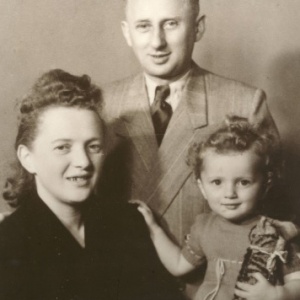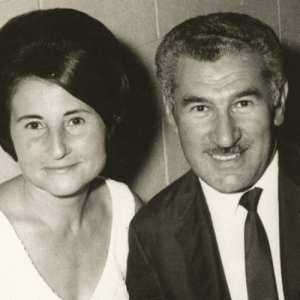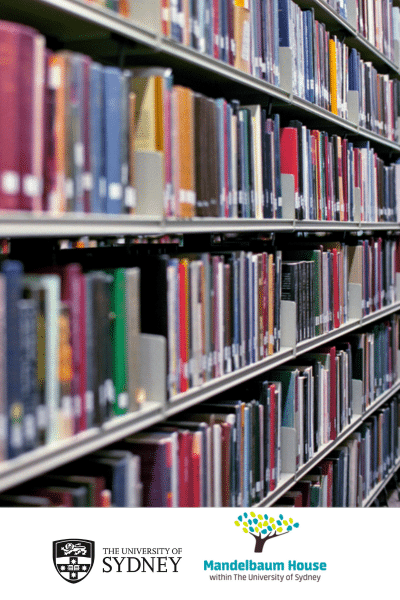Blog
May 16, 2016
Giving voice to the voiceless
It’s been four years since I joined the Education team at the Sydney Jewish Museum, and I continue to feel an enormous sense of privilege and responsibility working with Holocaust Survivors and being considered part of the mispocha (‘family’ in Yiddish).
The first time I heard a Survivor share their testimony was as a year 11 student in Vancouver, Canada. I remember being struck by the strength and resilience that it must have taken for the Survivor to share their most intimate and traumatic memories with a room full of strangers. I also knew that I could not ‘un – know’ what that Survivor had asked of me and everyone else who heard his testimony: we must listen to the voices from the past and think deeply about the incredible cruelty and kindness that human beings are capable of. I knew from that moment on that I was a changed person.
The cornerstone of my work as a Museum educator is to lend a voice to the voiceless – to introduce those who visit us to this unprecedented period of history and to act as a bridge between them and those who suffered, Survived and continue to grapple with the consequences of genocide.
Ever since the Museum was founded in 1992, Survivors have overseen the Museum’s policy making. It was they who were responsible the first objects collected (under the auspices of the Australian Association of Holocaust Survivors and Descendants); and the Survivors who continue to move visitors to this day, adding the nuance of individual experience to the overwhelming number of six million.
As age and time have begun to reduced the numbers of our Survivor volunteers, the museum has taken pains to ensure that their voices continue to be the heart and soul of this space. Using the latest technology, the Museum begun work on a new audio app that will enhance visitors experience of the permanent exhibition. Unsurprisingly, the App is named Voices.
The Voices work began with Antares Wells, one of the Museum’s superb researchers who listened to hundreds of testimonies (many hours each) to help create an experience for visitors that would bring them closer to this event.
For the last two years, I have built on this foundation, searching for Survivor, witness, perpetrator, and expert testimony to deepen the Holocaust narrative on display. Subsequently we have also added Museum educators and curators speaking about various artefacts, as well as testimonies that relate to music from the time.
It has been a harrowing and gruelling endeavour. I had to listen (and re-listen), select, and edit these testimonies before allocating them throughout the exhibition. At certain points it felt impossible to choose when multiple voices represented such different and competing interpretations and experiences.
Another notable challenge was the silence and absence of voices in certain sections. At these moments the silence echoed and I felt like I was getting closer to truly understanding the implications of the murder of six million Jewish people and the weight of a missing generation.

Post-liberation Hela, Adek & their daughter Mary Stein
One example of a voice that has remained with me since I first heard it is the testimony of Adek Stein, one of 67 people (approximately) who successfully escaped Treblinka death camp. In this fragment of his testimony, Adek’s words reveal an intimate and poignant view of one night in Treblinka:
They arrived again. A new transport of a thousand people that means we got in one day and a night two thousand people. And they have been undressed… Two thousand people standing under the sky; men, women, children, rabbis, doctors, professors, thieves, murderers, a nation. You’ve got all kinds… Two thousand people. We, the hundred people who used to work from one day to another day, were…a little far away, standing, looking around. Two thousand people looking for help. Crying, they just start to call…some words you use when you are sometimes in danger, or sick … “Shema Yisrael, Adonai Eloheinu Adonai Echad”. Thousand people standing under the sky in the night and calling Shema Yisrael, for help, to God… All night. No help came.
Adek’s testimony not only bears witness to the murder of thousands of people in Treblinka, but also speaks to how these victims, all from different backgrounds, united and resisted.
Shema Yisrael is one of the central Jewish prayers that is recited before bed every evening, and upon rising in the morning. It is meant to all be said in times of danger and one’s last words before death. It is a prayer that is an affirmation of Judaism and a declaration of faith in God. This personal dimension of the Jewish experience can only be revealed through the voice of a Survivor.
Author: Marie Bonardelli, Education Officer






What’s On Newsletter
Keep up to date on all Museum events and exhibitions.